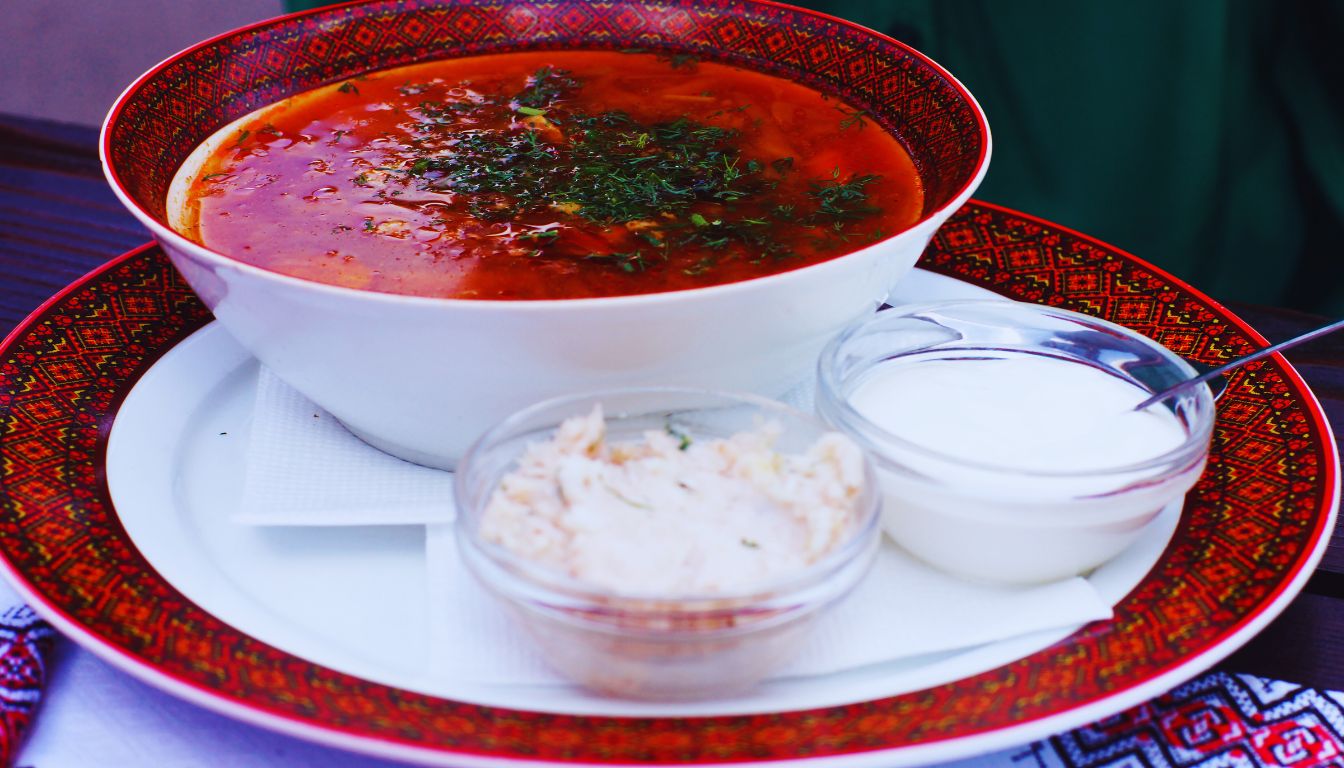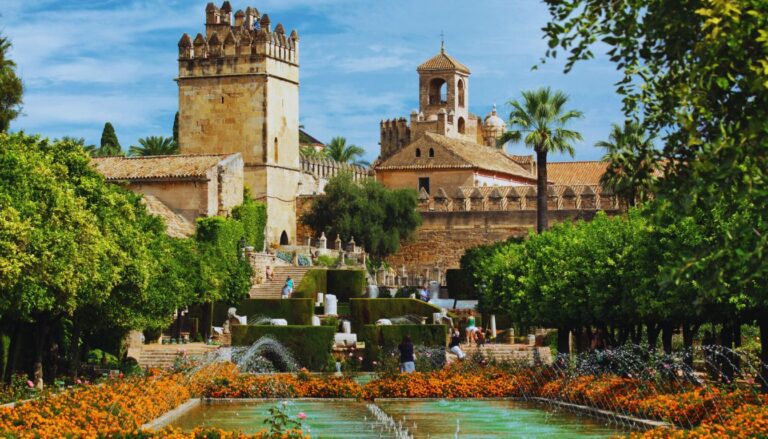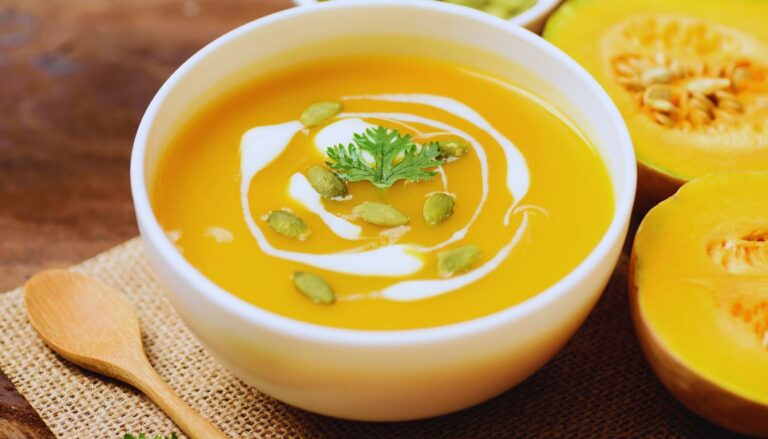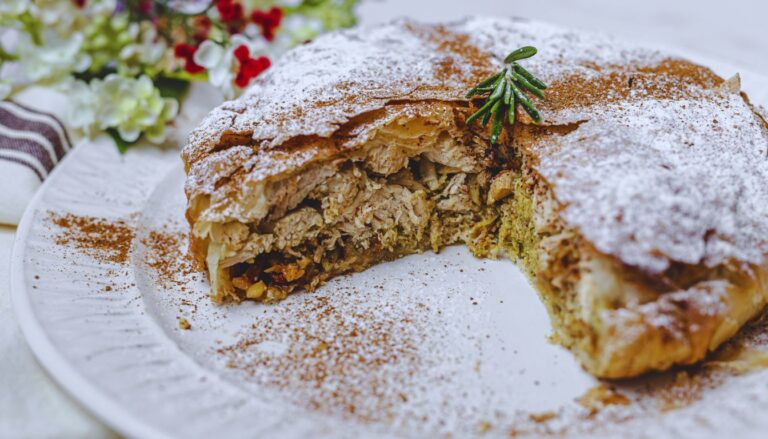Borscht, Lviv Ukraine
In the cobblestone streets of Lviv, where centuries of Eastern European history blend with aromatic steam rising from warm bowls, Ukrainian Borscht reigns as an embodiment of national identity. This vibrant beetroot soup, recognized by UNESCO as part of Ukraine’s Intangible Cultural Heritage, represents more than just sustenance – it’s a symbol of Ukrainian resilience, family traditions, and cultural pride. Each spoonful tells a story of generations past, carrying the warmth of home and the strength of tradition.
Table of Contents
Origins and History
The story of Ukrainian Borscht dates back centuries, with its roots deeply embedded in the nation’s agricultural heritage. The name derives from the Old Slavic word for hogweed, “borščь,” though the modern recipe evolved to center around beetroot:
- Ancient Slavic origins
- Evolution through centuries
- Regional variations development
- UNESCO recognition in 2022
- Symbol of national resilience
Historical documentation shows Borscht’s transformation from a simple peasant dish to a celebrated national treasure.
Cultural Significance
Borscht represents the heart of Ukrainian culture:
- Symbol of national identity
- Center of family gatherings
- Marker of seasonal celebrations
- Vehicle for cultural preservation
- Connection to agricultural heritage
The dish holds such cultural importance that recipes are passed down as precious family heirlooms, each variation telling its own story of regional influence and family tradition.
Ingredients and Preparation
Traditional Ukrainian Borscht requires specific ingredients and careful preparation:
Essential Components:
- Fresh beetroot
- Cabbage
- Carrots
- Potatoes
- Onions
- Fresh garlic
- Beans
- Tomato paste
Traditional Aromatics:
- Bay leaves
- Black peppercorns
- Fresh dill
- Fresh parsley
- Caraway seeds
Preparation Method:
- Preparing vegetable base
- Creating beet sautée
- Building layers of flavor
- Precise timing of ingredients
- Final seasoning adjustments
Where to Try It
Notable Establishments:
- Puzata Hata: Traditional homestyle preparation
- Baczewski Restaurant: Refined interpretation
- Trapezna: Historic setting near churches
Neighborhood Recommendations:
- Explore restaurants in Rynok Square
- Visit establishments in Old Town
- Discover family-run eateries in Pidzamche
Eating Etiquette and Customs
Traditional serving customs enhance the experience:
- Served hot with sour cream
- Accompanied by garlic bread (pampushky)
- Eaten as a main course
- Often served with additional garnishes
- Second helpings encouraged
Seasonal Considerations
While available year-round, seasonal variations exist:
- Heartier winter version with more root vegetables
- Lighter summer preparation with fresh herbs
- Special holiday variations
- Festival season adaptations
- Seasonal ingredient adjustments
Modern Interpretations
Contemporary chefs respect tradition while offering innovations:
- Vegetarian versions
- Creative presentations
- Updated garnishes
- Fusion elements
- Modern serving vessels
Practical Information and Travel Tips
Essential guidance for experiencing authentic Borscht:
- Visit during lunch hours
- Learn basic Ukrainian phrases
- Understand regional variations
- Ask about daily preparation
- Consider cooking classes
- Try different establishments
- Respect cultural significance
- Learn proper pronunciation
Making Your Borscht Journey Memorable
Immerse yourself in Lviv’s rich culinary heritage by exploring local markets, engaging with family-run restaurants, and learning about the dish’s cultural importance. Time your visit to experience both traditional and modern interpretations, and remember that each bowl of Borscht represents centuries of Ukrainian culture, resilience, and family tradition. This isn’t just soup – it’s a taste of Ukraine’s soul.













